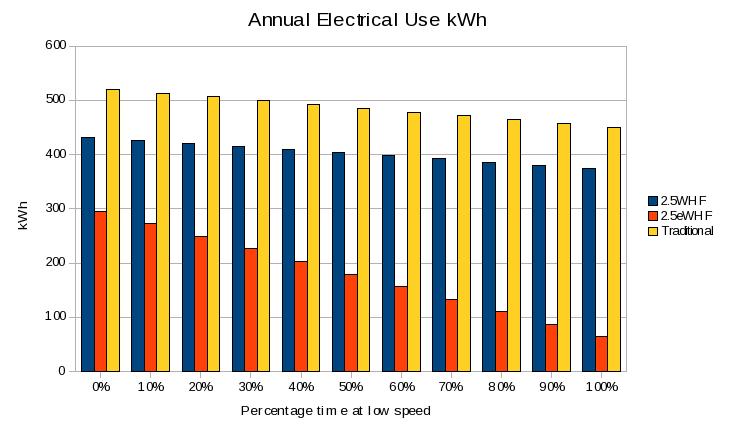
Most everything we build is designed for the worst case scenario, be it power output, strength, whatever. The only problem with this is that 90% of the time we are running a lower speed. Let me give you some examples.
Your car engine has enough power to accelerate a fully loaded vehicle uphill, in the summer heat, with a headwind, and a tailgater behind you. Great, but most of the time your car is taking one person down the freeway at a reasonable speed. Unfortunately, it’s very hard to design that motor to perform efficiently at high output power and low output power. The older ones among us remember some valiant attempts to achieve this goal, like turning off engine cyclinders. The hybrid guys just simply turn the gasoline engine off when not needed.
Of course, in the world of whole house fans, we use electric motors to power our fans. Typical AC (alternating current) fractional horsepower motors also suffer from the same problem. We specify and purchase them based on full load performance, but the part load (or low speed) efficiencies are not good at all. This is because a lot of electrical energy ends up being turned into heat while powering the internal electromagnets.
The reason we care about this, is because the ideal whole house fan will run at full load early in the evening to quickly cool the air in the house. At this point, we care more about getting comfortable than cooling the structure – so big CFM is the answer. However as the evening progresses, it’s not necessary for comfort to exhaust as much air. Also, the house probably will not cool down any faster just because we blow more air. An example of this is cooling hard boiled eggs under running cold water. If you turn up the tap all the way, do the eggs cool down faster ?
The solution is to use an electronically commutated motor (ECM). This type of motor is basically a permanent magnet motor with a small computer on top (was that technical enough?). The bottom line is good efficiency at full speed, and extraordinary efficiency at part load. Take a look at our new 2.5eWHF as an example.
The chart at the top of the page shows the annual electrical consumption of several different WHF’s. As you can see, the more that you run in low speed, the better the ECM looks.

very well explained! I had always assumed that electric motors were relatively linear in power/performance.